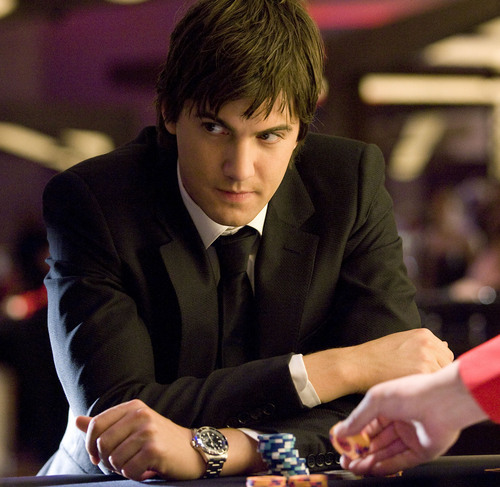Interview: Young@Heart
Posted on April 10, 2008 at 8:00 am
“Young@Heart” is a documentary about a Northampton, Massachusetts-based choir of elderly performers who sing rock songs — not soft rock or pop but raw punk rock. It is not at all stunt-ish or cutesy. It turns out that these songs written by angry young men to — as Jack Black said in “School of Rock,” “stick it to the man” take on a new and profound resonance when they are sung by these people in their 80’s and 90’s. You might think that by this time they are “the man.” But in a very real sense, they have more cause to stick it to the man than performers in their 20’s could imagine. For them, “the man” is loss, death, making the most of the time they have left. The lyrics of songs like the Ramones’ “I Want to Be Sedated,” The Clash’s “Should I Stay or Should I Go,” Sonic Youth’s “Schizophrenia,†James Brown’s “I Feel Good,†Allen Toussaint’s “Yes We Can Can,†and Cold Play’s “Fix You†are heartbreaking and touching when sung with such ferocity and humor. The Talking Heads’ “Life During Wartime†takes on much more meaning when sung by someone who fought in World War II. Bob Dylan’s “Forever Young” becomes ineffably touching when sung by people who find such joy in performing and learning even in their ninth decades.
I spoke to three members of the choir, music director Bob Cilman, and the man who made the movie, documentarian Stephen Walker.
Chorus members Brock Lynch, Leonard Fontaine, and John Larareo
Movie director Stephen Walker
How did you find out about the Young@Heart chorus?
They were performing in London. My partner Sally George said she had tickets to a show that could be quite interesting — a bunch of old people singing rock and roll music. I thought weird, gimmicky, had a faint image of a dancing bear, but they had brilliant reviews. They are much better known in Britain. I thought the show was just amazing and the audience demographic was interesting, lot of people in their 20’s and 30’s. They were were really responding.
What would you say the movie is about?
It’s about life and death, the way the meaning of words you know well is completely changed. It’s a film about old age through rock music. Other generations can identify with it because it is like a rock opera about old age. Issue led movies about old age are really boring. But looking at those fantastically interesting people, 87-year old Lenny singling “Purple Haze,” it becomes a metaphor for dementia.
The movie features music videos. It’s unusual for a documentary to include material that presented more impressionistically.
The film was hand in glove with the music videos. It was really interesting to break away into an out of time space, to have a commentary on the rest of the film. “Sedated” gets huge cheers in screenings because people see the punk in the 80-year-olds. They’re singing angrily about what it can be like.
What was the biggest challenge in making the film?
That mixture was one of the hardest challenges in the film to pull off, the tightrope between humor and sadness. It is quite a hard thing to pull off. If you get it wrong it can be a car crash. I had no idea that there would be deaths while we were filming. I never thought there would be a death. The worst we thought would happen would be that someone could fall or stumble on stage — we agreed at the beginning we would not humiliate anyone or make them look vulnerable or helpless. Oh, and I learned right from the beginning that two words could get me ejected immediately: “cute” or “adorable.” No infantalizing.
What is next?
We’d like to make a feature film about the group.



 “We were working at a one in five ratio. That’s the normal scale for stop-motion animation. The set was truly enormous. The forest had 1700 trees, each 6 feet high. The set was 80 feet long; it was like going into Wonderland. We also did all the close-ups at 1 in 3 . The grandfather puppet was 3 1/2 feet high. With that size, you get so much more detail. The grandfather’s hands were incredibly detailed which gave it a real different quality and makes it much more real.
“We were working at a one in five ratio. That’s the normal scale for stop-motion animation. The set was truly enormous. The forest had 1700 trees, each 6 feet high. The set was 80 feet long; it was like going into Wonderland. We also did all the close-ups at 1 in 3 . The grandfather puppet was 3 1/2 feet high. With that size, you get so much more detail. The grandfather’s hands were incredibly detailed which gave it a real different quality and makes it much more real. The struggle I had with prayer, this person with half my IQ seemed so natural. I was filled with curiousity and envy. This was in the fall. His bar mitzvah was in May. I needed to get started quickly.
The struggle I had with prayer, this person with half my IQ seemed so natural. I was filled with curiousity and envy. This was in the fall. His bar mitzvah was in May. I needed to get started quickly.